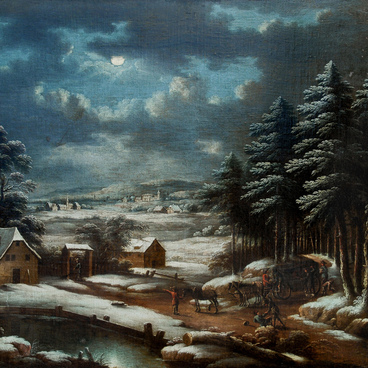André Dauchez was a French painter, engraver, and illustrator. He was born in 1870 into the family of the lawyer Fernand Dauchez. At an early age, he showed an aptitude for drawing, started studying engraving, and in 1889, began to attend the studio of Luc-Olivier Merson. André’s sister Jeanne Dauchez married the artist Lucien Simon in 1891.
André’s life and work are closely connected with Brittany, a picturesque region in northwestern France on the Atlantic coast. In 1894, Fernand Dauchez bought a house in the commune of Benodet. The atmosphere of the coastal landscape of Brittany with the light typical of this region became a source of inspiration for André and Lucien, who initially worked together. Later, Dauchez moved to another commune — Loctudy — also located in this region. With his passion for sailing and seascapes, Dauchez worked a lot from nature during the warm season. As winter approached, he would move to his studio in Paris.
Researchers note that Dauchez chose his own way in art — different from Impressionism. His works are distinguished by accuracy, rigor, and artistic reticence, with a touch of mysticism. In his drawings and paintings, Dauchez showed the power and vastness of nature, paying great attention to the air. The artist was called the “portrait painter of Brittany” for his attentive attitude to nature, and variations of light during the tides. His typical landscape is made in shades of brown-green, gray-ocher, and pale blue colors. He painted expanses of water and sky filled with light breaking through clouds, strips of sandy shore, and coastal vegetation. His paintings generally have no human figures; instead, they feature tall pines or sailboats in the sea.
Dauchez’s engravings were particularly popular. He had been acknowledged as a master of this art from the early years of his work. The artist André Saglio called them “the essence of the artist’s talent.” The penchant for monochrome drawing led the artist to a passion for photography: between 1895 and 1925, he created a series of photographic landscapes of Brittany.
André’s life and work are closely connected with Brittany, a picturesque region in northwestern France on the Atlantic coast. In 1894, Fernand Dauchez bought a house in the commune of Benodet. The atmosphere of the coastal landscape of Brittany with the light typical of this region became a source of inspiration for André and Lucien, who initially worked together. Later, Dauchez moved to another commune — Loctudy — also located in this region. With his passion for sailing and seascapes, Dauchez worked a lot from nature during the warm season. As winter approached, he would move to his studio in Paris.
Researchers note that Dauchez chose his own way in art — different from Impressionism. His works are distinguished by accuracy, rigor, and artistic reticence, with a touch of mysticism. In his drawings and paintings, Dauchez showed the power and vastness of nature, paying great attention to the air. The artist was called the “portrait painter of Brittany” for his attentive attitude to nature, and variations of light during the tides. His typical landscape is made in shades of brown-green, gray-ocher, and pale blue colors. He painted expanses of water and sky filled with light breaking through clouds, strips of sandy shore, and coastal vegetation. His paintings generally have no human figures; instead, they feature tall pines or sailboats in the sea.
Dauchez’s engravings were particularly popular. He had been acknowledged as a master of this art from the early years of his work. The artist André Saglio called them “the essence of the artist’s talent.” The penchant for monochrome drawing led the artist to a passion for photography: between 1895 and 1925, he created a series of photographic landscapes of Brittany.



